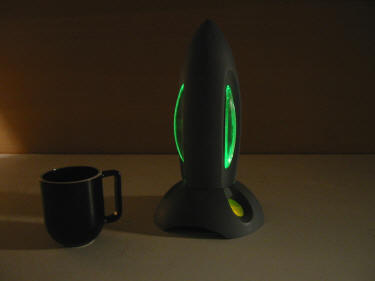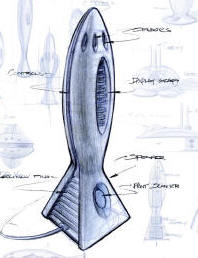![]()
Press
![]()
Links
Subscribe to Mailing List
|
|
Limelight
Info
|
|
|
|
The goal of the Limelight is to provide the user with an awareness of the current condition of actual threats that should be of concern. This is not simply the threat as indicated through a press release by a government organization or a report by a news agency. Nor, is it entirely a function of local information such as nearby loud noises, heat, or radioactivity. The current threat is an elaborate and complicated function of numerous local and global indicators, including but not limited to the above. The ability to correctly identify, monitor, and interpret this plethora of information is beyond the scope of a single individual. The demand for an automated electronic personal tactical threat detection and indication system is obvious.
Limelight is designed to provide the necessarily balance of local measurements and global monitoring to provide an accurate awareness of threats. However, the privilege of obtaining this information and easing the mind of the user is not without its price: the relinquishing of privacy and personal biometric data as well as the profiling of the individual's usage patterns, location, and activities.
The system is composed of five primary components:
Physical Characteristics
Initialization and Operation
Local Sensing
Global Monitoring
Ambient DisplayEach is described in further detail in the following sections.
Physical Characteristics
The system is designed to co-exist in habitats and situations humans frequent. Standing at around 40 cm and weighing less than 4 kg, it can be comfortably used on a bookshelf, table, dashboard, kitchen, etc. It rests sturdily on its base and is just as easy to transport by grabbing its soft outer membrane. Its design is centered around the typical consumer -- soft and playful rather than dangerous and industrial. Intended to be easily situated in any room of a private home, it is just as easily transported and used at a public office, coffee shop, bar, or restaurant. In essence, it is usable wherever and whenever humans feel anxiety from threats and are comforted by real-time threat monitoring and awareness.
Inside are a variety of components and sub-systems along with a battery, providing 8+ hours of operational time. All of the internal components are solid state, without any moving parts, and especially designed for operation in an embedded system such as Limelight.
Initialization and Operation
The system remains in standby mode, conserving battery life, until a user initiates a session by providing their personal biometric data. They do this via a hardware fingerprint recognition system located at the base of Limelight. This fingerprint data is captured for use within the system. Relinquishing this data is an important prerequisite to the overall operation of Limelight as it establishes a biometric guarantee of the location of the individual user. This allows for tracking, monitoring, and surveilling of the user during its operation as well as during subsequent uses.
Limelight also initiates a wireless, low bandwidth (9600 kbs) connection with the global internet (this is currently accomplished through low bit rate wireless modems -- see global monitoring section for more details). It is then able to transmit the fingerprint data back to the central EIU server as well as establish a continuous link to the global network.
Once the fingerprint acquisition has occurred, the system initiates its normal operation: the vigilant monitoring of the current state of threat and indicating an awareness of this threat to the local user.
Local Sensing
The current threat is an elaborate and complicated function of numerous local and global indicators. A variety of local sensing equipment onboard Limelight samples the local environment thousands of times every second. The measurements are carefully compared to "normal parameters" as well as globally changing indicators to watch for any sign signaling a potential threat. The rules used to determine a current threat are also in flux, constantly being updated and reconfigured via the wireless remote network connection to Limelight from the EIU server.
A more detailed list of local sensing hardware can be found here.
Global Monitoring
Limelight is only one piece of a larger global threat detection infrastructure. Using a low bandwidth connection, Limelight can communicate with remote, high speed servers that monitor the state of various threat parameters around the globe. This accessible remote data not only provides additional threat detection accuracy but allows Limelights to be uploaded with the most recent threat detection algorithms and sensor weightings. This adaptability is a powerful feature of Limelight -- allowing for threats not anticipated in the initial release to be accommodated as demand dictates.
A more detailed list of global monitoring hardware can be found here.
Ambient Display
With real time data streaming from the global monitoring systems and numerous onboard sensors measuring the local state of terror, it is ultimately the ambient threat indicator that provides the processed, resulting output to the user. The threat awareness is indicated by several sub-systems onboard Limelight . Limelight is a physical, ambient background process. It is non-disruptive during low and mild threatening conditions, simply providing the level of threat by simple ambient cues.
A set of colored lights located along the central length of the unit are visible from both sides and provide a visual "heartbeat of threatening conditions".
A speaker embedded within the lower portion of the base is capable of producing low frequency vibrations, hums, and oscillations to unobtrusively indicate the current threat.
Under more extreme levels of threat Limelight is capable of producing brighter distracting lights and noises as well as visual nervous vibrations and clouds of smoke.


 007_small.jpg)

 036_small.jpg)